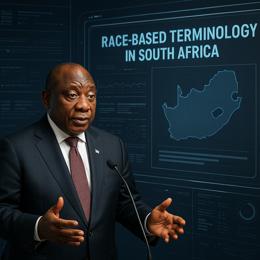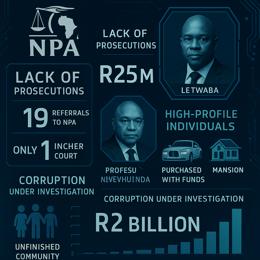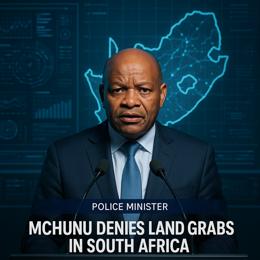Image created by AI
Transformation Debate: DFFE Rejects EFF MP's Claims on Fishing Sector Disparities
The Department of Forestry, Fisheries and the Environment (DFFE) has recently been embroiled in a heated exchange with Economic Freedom Fighters (EFF) Member of Parliament Nazier Paulsen over claims of inadequate transformation in South Africa's fishing sector. The debate, which prominently addresses the racial composition of fishing right allocations, has brought to the surface longstanding issues of equity and representation in one of the country's pivotal industries.
MP Nazier Paulsen opened the discussion with the argument that the coloured and black African communities are substantially under-represented in the fishing enterprise—a sector historically central to their economic vitality. He contended that accessibility to ocean resources for these communities has persistently declined since the advent of democracy, implying a reversal of transformational goals.
The DFFE swiftly retorted, labeling Paulsen's allegations as misleading and a severe misuse of parliamentary privilege. According to the department, substantial headway has been made in the redistribution of rights within the commercial fishing sectors, emphasizing black ownership percentages across various fisheries. The department cited a statistic that lays out an average black shareholding of significantly over 70% in multiple fishing categories, aiming to demonstrate the tangible results of their efforts toward an equitable industry.
Despite these lofty figures presented by the DFFE, Paulsen emphasized the need to delve deeper into the value of quotas allocated through the Fishing Rights Allocation Process (FRAP), distinguishing commercial fishing juggernauts from small-scale fishers. Paulsen deems the portion awarded to small-scale fisherfolk as minuscule, thereby hindering their evolution into competitive entities in the marketplace. This critique suggests a disparity between nominal ownership statistics and the qualitative benefits accruing to historically marginalized groups.
Paulsen further challenged the DFFE to reveal the actual size of Total Allowable Catch (TAC) designated for black citizens in comparison to their white counterparts. To him, simple percentage representations serve as a diversion from the core issue: equitable resource distribution.
The department's defense highlighted the improved percentages of black African and coloured shareholding since the inception of rights allocations in 2005. Yet, a study by the DFFE on ethnic group representation among small-scale fishers indicated a preponderance of white individuals within the Western Cape. The precise impact of this demographic skew on the industry's inclusivity or transformation remains a subject of debate.
Remarkably, the Masifundise Development Trust, a vital civil society entity within the small-scale fishing landscape, abstained from commenting on the discourse. This silence may be interpreted in numerous ways but suggests a potential need for further scrutiny or possibly the complexity of the issues at hand.
With the department and Paulsen holding divergent views on the matter, the conversation ignites critical questions about the real state of transformation within South Africa's lucrative fishing sector. It begs a reassessment of the established metrics for measuring progress and insists on a reflection of whether these statistics equate to genuine empowerment of historically disadvantaged populations in a tangible, livelihood-enhancing manner.
#GOOGLE_AD










